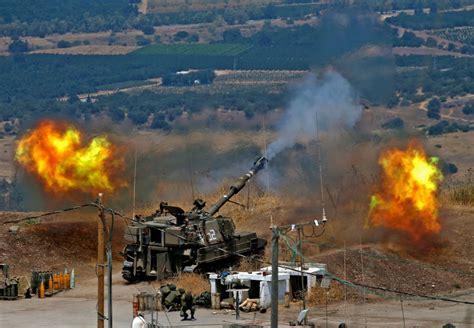
Hezbollah launches largest rocket attack on Israel’s North since last month
Hezbollah on Wednesday launched its largest attack on the North since August 25, launching around 65 rockets according to the IDF and with 48 rocket sirens going off shortly after noon.
It took around 90 minutes for the IDF to clarify the number of rockets fired, but it was already clear that compared to the average of less than 20 rocket sirens per day over the last week, the Lebanese terror group had re-upped its threat level against Israel.
There have also been direct hits in Kiryat Shmona, hits in other places, and fires caused by hits in fields.
Some of the additional areas which were targeted included Malchia, Ramot Naftali, and Beit Hillel.
The IDF said that it had shot down some of the rockets, but failed to shoot down others.
The military did not explain why it missed certain rockets, though given the context, the sudden large volume after a relatively quiet period may have partially taken the air defense apparatus by surprise.
Prior to August 25, Hezbollah had at times launched 100 or even 200 rockets in a day against Israel’s North and frequently was launching dozens per day.
On August 25, it was about to fire several hundred in one day, possibly close to around 1,000, including firing deeper into Israel’s center, but the IDF launched a preemptive strike, destroying thousands of the terror group’s rockets.
Still, Hezbollah managed to launch between 250-350 aerial threats, its largest assault on Israel of the current war.
Since then, Hezbollah aerial threats some days have been in the single digits and have rarely gotten as high as 30.
In that sense, it was clear on Wednesday that Hezbollah had re-crossed a threshold of challenging Israel with more rocket attacks after a period of time in which it had seemed deterred by the August 25 IDF preemptive strike.
Despite the IDF’s very successful air strikes from a tactical perspective, Hezbollah is still believed to have around 140,000 of its pre-war 150,000 intact (Israel has destroyed or Hezbollah has likely fired off more than 10,000 threats at this point), meaning the vast majority of its formidable arsenal.
The IDF said it was counterattacking somewhat stronger than it has in recent days, though the military has continued to hit Hezbollah throughout the period since August 25, even on days when the Lebanese terror group itself was attacking less. Further, it said its response so far was limited to southern Lebanon.
The counterattack was against Kunin and Kabariha, the sources of the rocket fire, according to the IDF.
Midday, the IDF added in an update that Hezbollah fired one additional rocket at Shtula in the north around 1:40 p.m.
According to the IDF, the rocket landed in an open field without causing injuries.
Political debate
Within Israel, the political debate has heated up over how long the IDF can put off giving Hezbollah an ultimatum for restoring quiet and security on the border to allow Israel’s 60,000 evacuated northern residents to return to their homes.
Prime Minister Benjamin Netanyahu has wanted this question to remain open-ended even at the cost of the northern residents remaining evacuated for several more months so that he can hope to keep military power and pressure focused on Hamas in the South.
Netanyahu’s main opposition figure, National Unity party leader Benny Gantz, had already demanded in early June that Netanyahu give Hezbollah an ultimatum of September 1 so that northern residents’ students would be able to return to their homes in time for the start of the school year.
On Wednesday, he continued to criticize Netanyahu for “continued hesitations” in giving Hezbollah an ultimatum and keeping the northern residents in the line of fire.
Source » jpost.com





